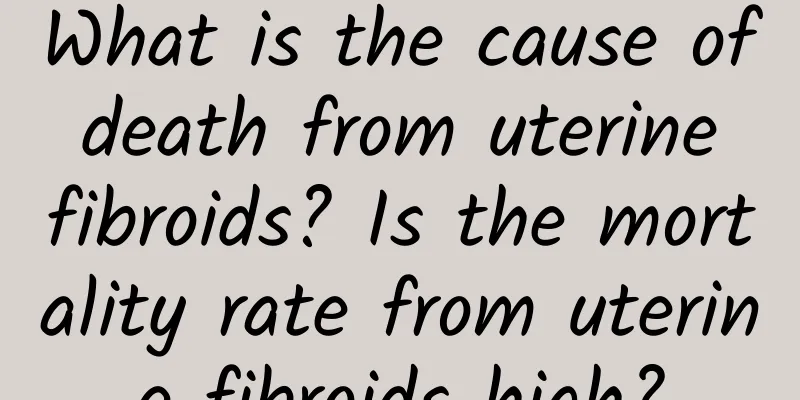How to prevent endometrial thickening

|
Endometrial thickness is a disease caused by the appearance of the endometrium with growth function outside the inner wall of the uterine cavity. According to the currently recognized causes, paying attention to the following points can prevent the occurrence of endometrial thickness. 1. Girls with a genetic history who experience primary dysmenorrhea or menorrhagia after menstruation may consider cyclical, intermittent oral contraceptives and stop taking them when they want to have children. 2. Women with endocrine dysfunction should not use contraception after marriage and should not have children early. 3. Women with reproductive tract obstruction should detect and treat it early to prevent retained menstrual blood from flowing back into the abdominal cavity. 4. For women who have dysmenorrhea or menstrual disorders, heavy menstrual flow, and do not seek to have children for the time being, after excluding other organic diseases, they should be guided to use contraceptive pills for contraception. 5. Those who are infertile after more than one year of marriage without contraception should actively and comprehensively undergo infertility examination. If it is found that the infertility is caused by endometrial displacement, laser treatment or hormone treatment can be used. Hormone treatment must be used under the guidance of a doctor. 6. Pelvic examination is generally not performed during menstruation. When it is necessary to perform an examination, the uterus should not be squeezed hard to avoid squeezing the endometrium into the fallopian tube and causing abdominal implantation. Try to avoid artificial abortion and use negative pressure correctly during artificial abortion. There should be no negative pressure when the suction tube enters and exits the uterine cavity. The negative pressure in the uterine cavity should not be too high and then the suction tube should not be pulled out suddenly to prevent decidua fragments from flowing back into the abdominal cavity with uterine blood and causing endometrial thickening. The uterus should not be squeezed hard after artificial abortion. When treating cervical erosion, avoid causing cervical stenosis. 7. Strictly follow the operating procedures of fallopian tube patency test (ventilation, fluid perfusion) and angiography. When performing fallopian tube ventilation, fluid perfusion, tubal ligation and local treatment of cervical erosion, the operation time should be set 3 to 7 days after the end of menstruation to avoid endometrial fragments from entering the abdominal cavity. 8. During cesarean section and cesarean section evacuation, care should be taken to prevent the contents of the uterine cavity from overflowing into the abdominal cavity. When suturing the uterine incision, do not allow the suture to pass through the endometrial layer. Before suturing the abdominal wall incision, flush with saline to prevent endometrial implantation. The above-mentioned methods for preventing endometrial thickness are relatively common. After understanding the methods for preventing endometrial thickness, everyone is required to choose the appropriate prevention method based on their own actual situation. |
<<: How to prevent infertility caused by endometrial thickening
>>: How long does it take to cure mild endometrial thickening?
Recommend
Don't confuse the symptoms of an enlarged cervix
Nowadays, many female friends ignore the symptoms...
Can taking medicine induce abortion? A certain time limit
Medical abortion is not unfamiliar to everyone. I...
What are the complications of ovarian cysts?
Ovarian cysts are asymptomatic in the early stage...
How to treat after abortion? What is the cause of back pain after abortion?
Many women have unexpected pregnancies because th...
Physical examination of women is the main method for diagnosing vulvar leukoplakia
The diagnosis of female vulvar leukoplakia is of ...
The occurrence of ectopic pregnancy may also be related to repeated abortions
The occurrence of ectopic pregnancy may also be r...
What are the causes of recurrence of cervical erosion in women? 3 causes of recurrence of cervical erosion
There are many reasons for cervical erosion, so w...
What to do if endometrial thickness and cervical hypertrophy
Endometrial thickening and cervical hypertrophy a...
Analyze the specific cause of vulvar leukoplakia
Clinically, the occurrence of vulvar leukoplakia ...
Introduction to four dietary treatments for uterine fibroids
As people's pursuit of health becomes higher ...
What are the symptoms of pelvic inflammatory disease?
Symptoms of pelvic inflammatory disease generally...
Will chronic cervicitis cause back pain in women? The four major symptoms of chronic cervicitis in women are more obvious.
Chronic cervicitis will cause symptoms of low bac...
What tests are needed for cervicitis
Cervicitis is one of the common gynecological dis...
As the epidemic situation intensifies, XBB becomes the mainstream virus strain! Nutritionist Gao Minmin: 8 nutrients to strengthen mucosa and prevent rupture
The CDC stated that the domestic epidemic situati...
To prevent fatty liver, should we eat less white rice and white flour? Nutritionist Zhao Hanying: Eat more plant protein to reverse fatty liver
About a quarter of the world's population suf...









